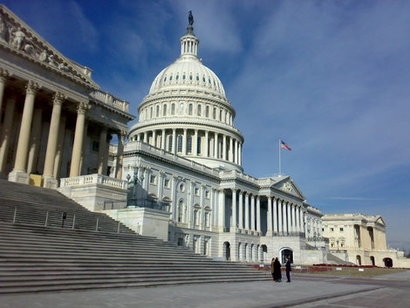
The new legislation will sustain and enhance the Department of Energy’s Office of Wind Energy while also increasing investment and supporting jobs in the wind industry. It will renew and expand the Office of Wind Energy and award competitive grants to improve the energy efficiency, reliability and capacity of wind energy generation.
The wind energy sector supports more than 114,000 American jobs and provides more than $1 billion in revenue each year for states and local communities. Senators Smith and Collins say that federal support for wind research and development has already delivered significant results, and that the legislation is part of a larger effort to accelerate innovative technologies, educate local communities, create more jobs and enhance the economy in rural areas.
“Minnesota has long been a national leader in wind energy” said Senator Smith. “The state is home to the two largest wind farm construction companies in the country - Mortenson Energy in the Twin Cities and Blattner Energy in rural Avon. Nearly 20 percent of electricity in Minnesota last year was generated from wind turbines – enough to power over a million homes. We know wind energy is a rural economic engine, it’s good for the environment, and it’s the cheapest way to add new electricity to the electrical grid.”
Senator Collins added that within 50 miles of the US coast, there is enough offshore wind capacity to power the country four times over and that offshore wind projects, such as Aqua Ventus at the University of maine, have the potential to support more than 2,000 good-paying jobs in the state. The new legislation will encourage and accelerate the wind energy research being carried out on new technologies that will enable businesses to continue to develop wind energy, including off the coast of Maine
The new Wind Energy Research and Development Act of 2019 authorizes and expands DOE’s Office of Wind Energy for five years and directs the Secretary of Energy to award competitive grants to:
Improve the energy efficiency, reliability & capacity of wind energy generation;
Improve land-based and offshore blade, generator, tower, and support designs and transformational technologies for harnessing wind energy, including airborne wind energy generators;
Increase recycling and reuse of wind-energy components;
Reduce cost of permitting, construction, operation & maintenance of wind energy systems;
Conduct a wind energy technology validation and market transformation program;
Reduce barriers to widespread adoption of wind power; and
Develop new wildlife impact mitigation technologies.
The legislation is supported by the American Wind Energy Association, Natural Resources Defense Council, Environmental Defense Fund, Distributed Wind Energy Association, Citizens for Responsible Energy Solutions, Bipartisan Policy Center Action, and the US Chamber of Commerce Global Energy Institute.
The American Wind Energy Association (AWEA) has welcomed and applauded the new law.
“AWEA applauds the bipartisan efforts of Senators Tina Smith (D-Minn.) and Susan Collins (R-Maine) on the introduction of the Wind Energy Research and Development Act in the Senate” said Tom Kiernan, CEO of AWEA. “Over the past ten years, American ingenuity has helped the cost of wind energy fall by more than two-thirds. The research from the Department of Energy’s Wind Energy Program will continue the industry’s innovation streak and help deliver improvements in energy efficiency, reliability and permitting.”
For additional information:
American Wind Energy Association (AWEA)

